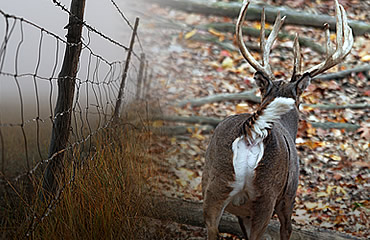Use these obstacles to your advantage when selecting stand sites.
Fences are common in many deer hunting areas, and it’s easy to find heavily used crossings. Deer cross fences by ducking under or jumping over. Either way, they tend to leave hair on the wire or wood.
Where they duck under, they wallow out a distinct depression and kill the vegetation under the fence. The approaching trail to a heavily used fence crossing is easy to see. Deer leave brown hair from their backs where they duck under a fence, but don’t mistake cattle or feral hog hair for deer hair. Hair from hogs or cattle is more coarse than deer hair.
Remove the hair from a fence crossing, then check that spot a couple of days later. That gives you an idea of how frequently deer are using the crossing.
Where deer jump fences, they frequently leave white belly hair on the wire. Whitetails can jump much higher than a standard 4-foot fence, but they only jump as high as necessary to clear the fence.
Whether they’re going over or under, fence crossings can be great stand sites. It is common for several trails to come together at a fence crossing, so they are great places to see lots of deer.
It’s not always a good idea to hunt crossings on a boundary fence between properties, however. If you shoot a deer as it crosses onto your property and it runs back the way it came, the neighbors might think you shot the deer on their side of the fence.
Read Recent Tip of the Week:
• Water, Water Everywhere: The more water on a property, the less important it is for hunting.




.png)